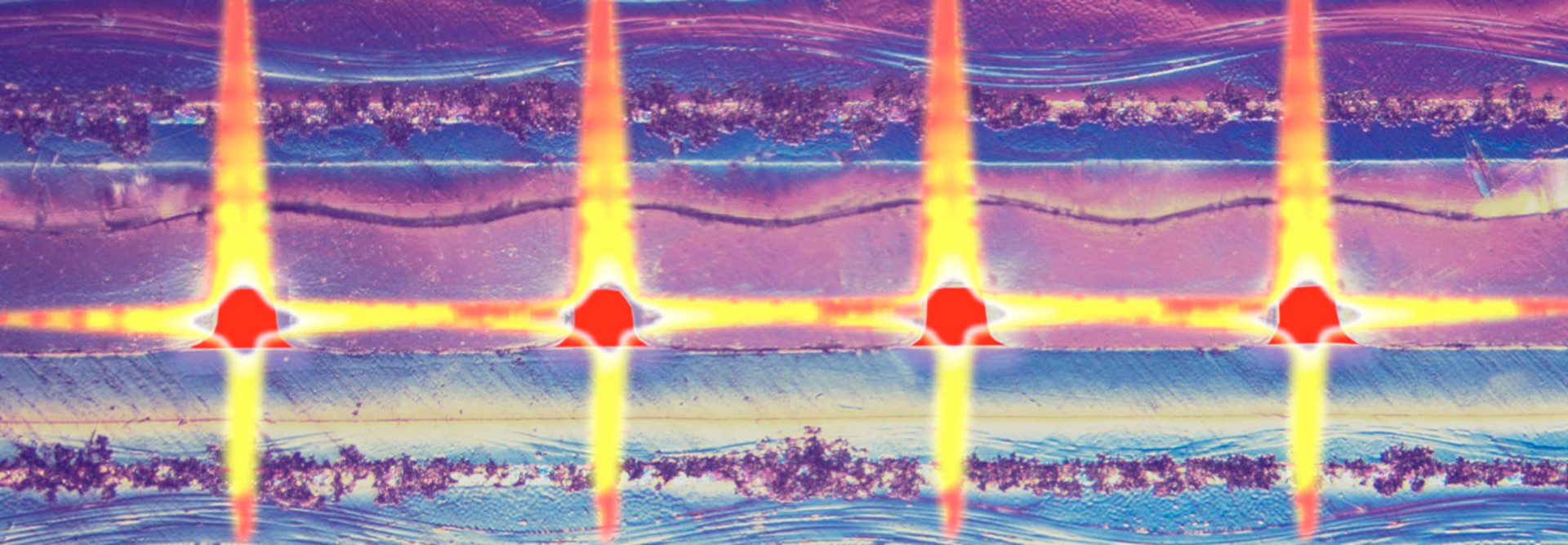With the evolution of optical computing, also known as photonic computing, we now can transmit data via light as opposed to electronic circuitry used in traditional computing.
Take Google Fiber, for instance, which transmits information through fiber optic cables. The use of light to carry data certainly has its advantages; among other things, it’s faster and requires less energy. However, the main disadvantage of optical computing today has to do with size.
“Transistors and other key components in modern computers and cellphones are tiny compared with optical components that carry information because of the current limit to how tightly you can squeeze light down,” says Sharon Weiss, professor of electrical engineering, physics and materials science at Vanderbilt University and director of the Vanderbilt Institute of Nanoscale Science and Engineering.
Currently, there are commercial products with photonic integrated circuits, or transceivers, that provide an “intersection point between what you think of as traditional electronic computers and optical fibers. It really helps you transfer information more efficiently from one computer to the next,” explains Weiss.
Click the banner below for exclusive content about emerging technologies in higher ed.


A Hybrid Approach Uses Optics as Needed Without Compromising Size
Given the current challenge, what potential does optical computing have to disrupt traditional computing?
In the near-term future of optical computing, Weiss sees a hybrid solution that maintains the current infrastructure of electronics while utilizing optics where it makes sense for faster information transfer and lower power consumption.
LEARN MORE: The tech behind America's top research universities.
“I think there will be optical components on the chip, but it certainly won’t replace all the electrical components,” she says. “That’s where the interesting research is — to determine how far down the penetration of light is, where it makes sense, and the disadvantages of the size scale.”
Optical Computing Has Higher Ed Potential
Looking to the future, Weiss and her team have also been researching various designs of optical components that squeeze light and energy into extremely small regions with very high energy density. This means that the energy cost of turning the light on and off can be encoded in ones and zeros, which would significantly reduce the amount of light or energy needed to turn light on and off.
$1.1 billion
The value of the global market for photonic integrated circuits in 2021
Source: Future Market Insights, “Photonic Integrated Circuits (PIC) Market Snapshot (2022-2032),” July 2022
As for higher education, Weiss thinks that optical computing will encourage engineering students to study photonics. With the growing number of products under development, along with those already on the market that are integrating optics with electronics, there’s a demand for engineers who have additional training in optical computing.
To that end, Vanderbilt recently formed a partnership with Keysight Technologies, which manufactures electronic testing and measurement equipment, to provide undergraduate students with training on state-of-the-art photonic instrumentation in the lab.
“The winds are definitely blowing in the direction of more training for undergraduates and advancing graduate-level research,” Weiss says.
UP NEXT: Accelerating university research with network upgrades.
Volker Steger/Science Photo Library











